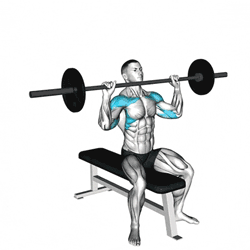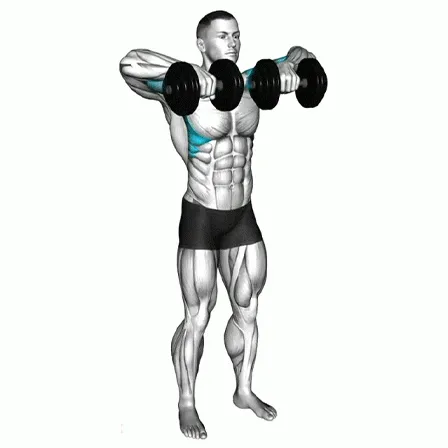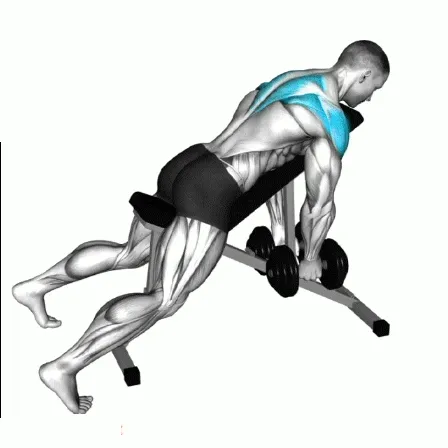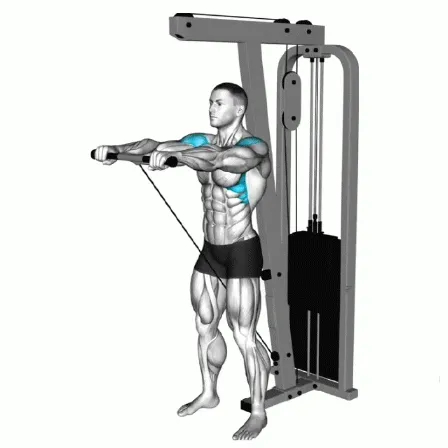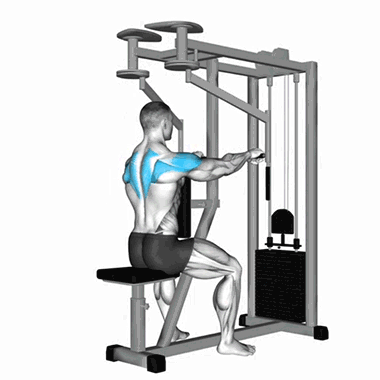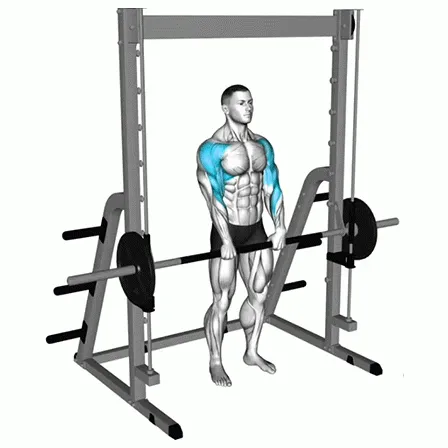Overhead Press: Build Shoulder Strength
The overhead press is one of the most effective compound exercises for building shoulder strength, stability, and size. It primarily targets the deltoids while also engaging the triceps, upper chest, and core. Whether you use a barbell, dumbbells, or kettlebells, mastering proper technique ensures maximum results and reduces the risk of injury.
Instructions
Setup
-
Stand with your feet shoulder-width apart for a stable base.
-
Hold a barbell, dumbbells, or kettlebells with an overhand grip. For barbells, place your hands slightly wider than shoulder-width.
-
Rest the barbell on the front of your shoulders or hold dumbbells at shoulder height with elbows slightly in front of your body.
Positioning
-
Keep your chest lifted and your core engaged.
-
Look straight ahead, ensuring a neutral spine.
-
Keep wrists aligned with forearms to prevent strain.
Execution
-
Take a deep breath, and as you exhale, press the weight directly overhead in a controlled motion.
-
Avoid flaring elbows out too much—they should follow a slightly forward arc.
-
Fully extend arms overhead without locking elbows.
Descent
-
Lower the weight slowly and under control back to the starting position.
-
Keep your core tight to prevent your lower back from arching.
Repeat
-
Perform the desired number of repetitions while maintaining form.
Tips for Proper Form
-
Warm Up: Use dynamic stretches and lighter weights to prime your shoulders.
-
Engage Your Core: A strong core prevents excessive lower back arching.
-
Use Proper Weight: Begin with a manageable load and increase gradually.
-
Grip and Hand Position:
-
Barbell: Slightly wider than shoulder-width.
-
Dumbbells: Palms facing forward or neutral for reduced shoulder strain.
-
-
Breathing: Exhale during the press, inhale during the descent.
-
Stabilize Your Body: Keep glutes tight, feet planted, and avoid leaning backward.
-
Range of Motion: Press to full extension without locking elbows; lower to chin or shoulders.
-
Spot or Rack: Use a rack or spotter when lifting heavy.
-
Progressive Overload: Gradually increase weight, reps, or sets for consistent strength gains.
-
Listen to Your Body: Stop if you feel pain in shoulders, neck, or back.
Benefits of the Overhead Press
-
Builds shoulder mass and strength, especially in the front and middle delts.
-
Engages the triceps, traps, and upper chest, making it a powerful compound lift.
-
Improves core stability and balance, since your abs and lower back stabilize the movement.
-
Enhances postural strength, supporting better alignment in daily activities and other lifts.
-
Boosts athletic performance, as overhead pressing translates to improved pushing power in sports.
-
Can be done with different equipment (barbell, dumbbells, kettlebells, resistance bands) for versatility.
Conclusion: The overhead press is a cornerstone exercise for upper body strength and shoulder development. When performed with correct form and progressive overload, it helps build powerful shoulders, a strong core, and better posture.
